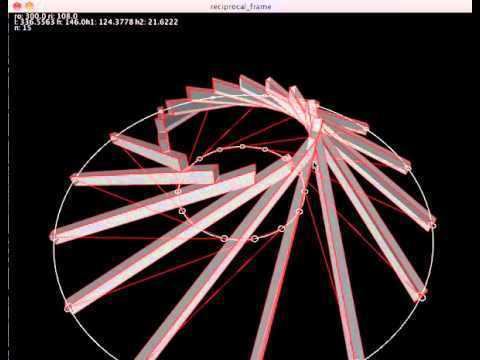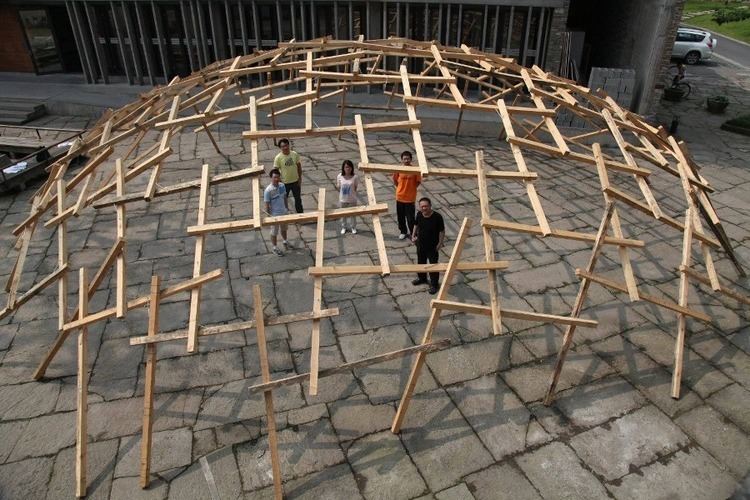 | ||
Reciprocal frame structure
A reciprocal frame is a class of self-supporting structure made of three or more beams and which requires no center support to create roofs, bridges or similar structures.
Contents
- Reciprocal frame structure
- How to build a reciprocal frame roof with tony wrench living in the future ecovillages 43
- Construction
- History
- References
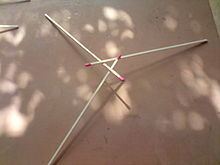
How to build a reciprocal frame roof with tony wrench living in the future ecovillages 43
Construction
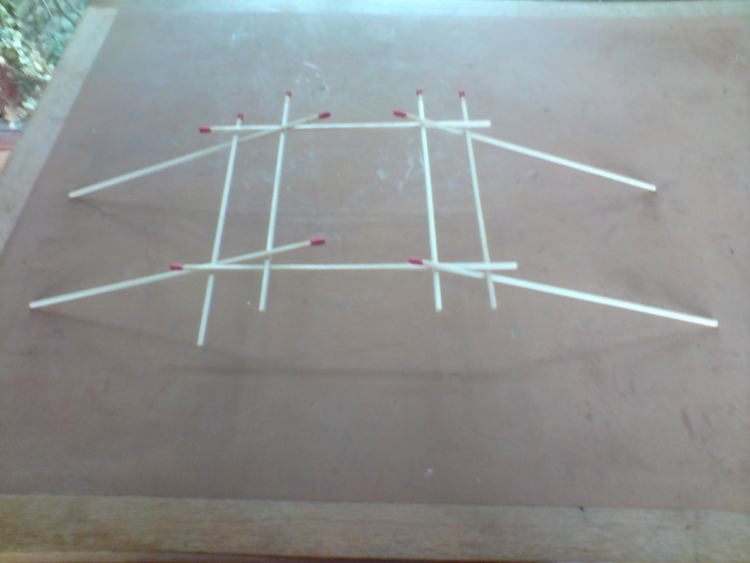
A reciprocal roof is assembled by first installing a temporary central support that holds the first rafter at the correct height. The first rafter is fitted between the wall and the temporary central support and then further rafters are added, each resting on the last. The final rafter fits on top of the previous rafter and under the very first one. The rafters are then tied with wire before the temporary support is removed. The failure of a single element may lead to the failure of the whole structure.
History
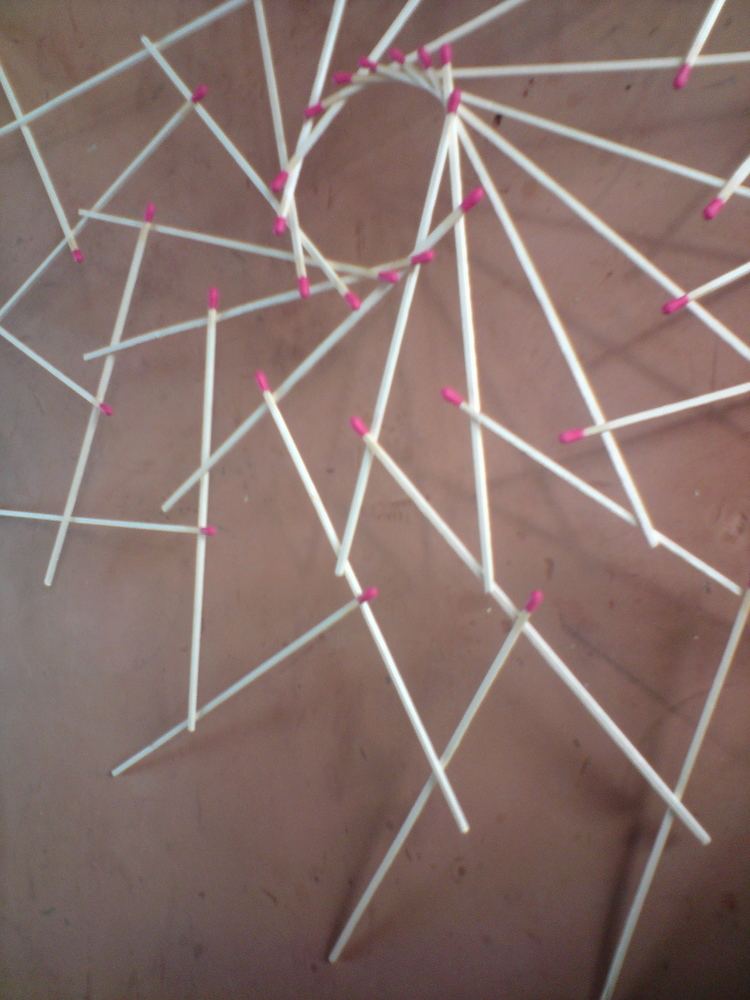
The reciprocal frame, also known as a Mandala roof, has been used since the twelfth century in Chinese and Japanese architecture although little or no trace of these ancient methods remain. More recently they were used by Architects Kazuhiro Ishii (the Spinning House) and Yasufumi Kijima, and engineer Yoishi Kan (Kijima Stonemason Museum).
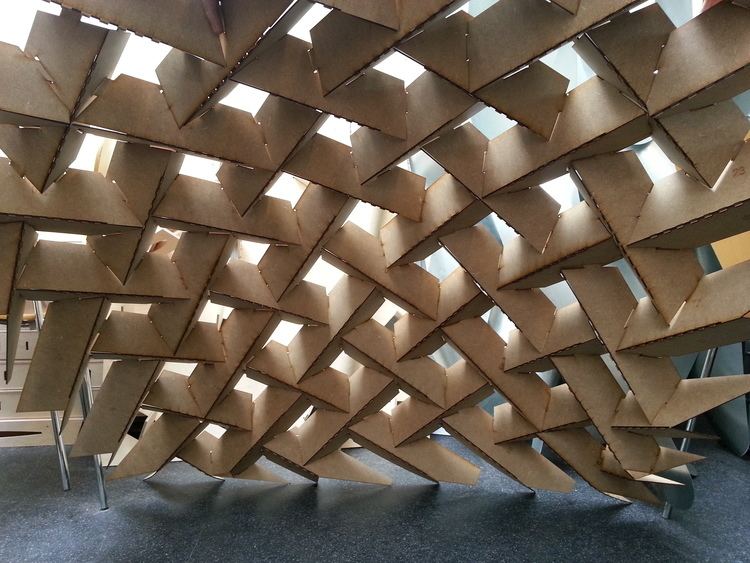
Villard de Honnecourt produced sketches showing similar designs in the 13th century and similar structures were also used in the chapter house of Lincoln Cathedral. Josep Maria Jujol used this structure in both the Casa Bofarull and Casa Negre
